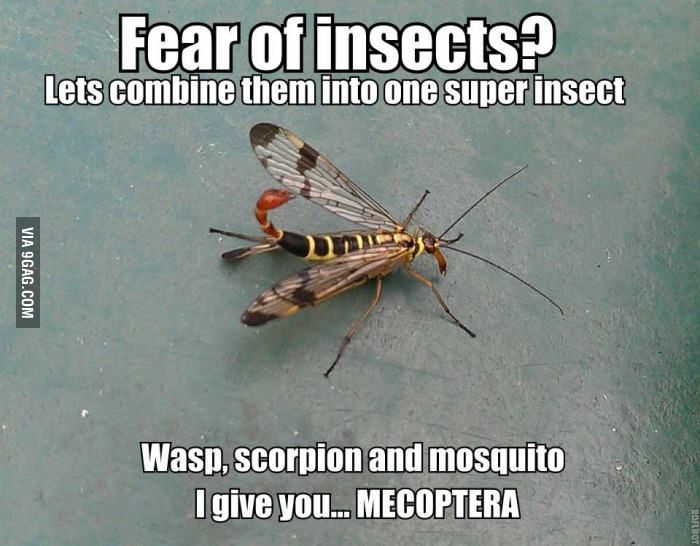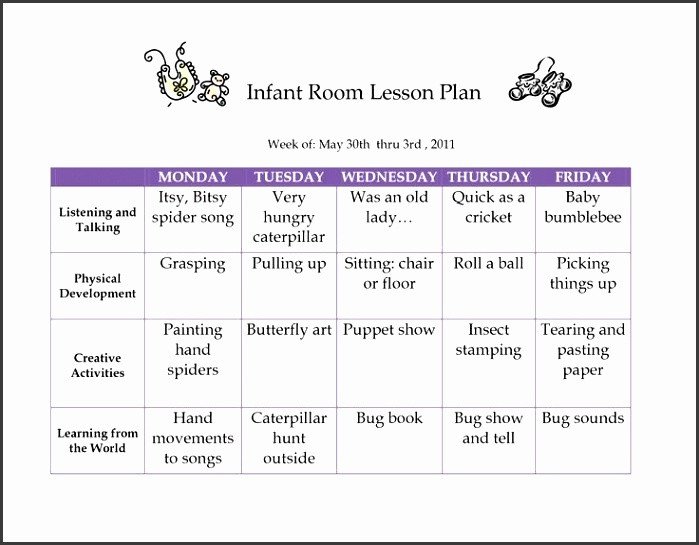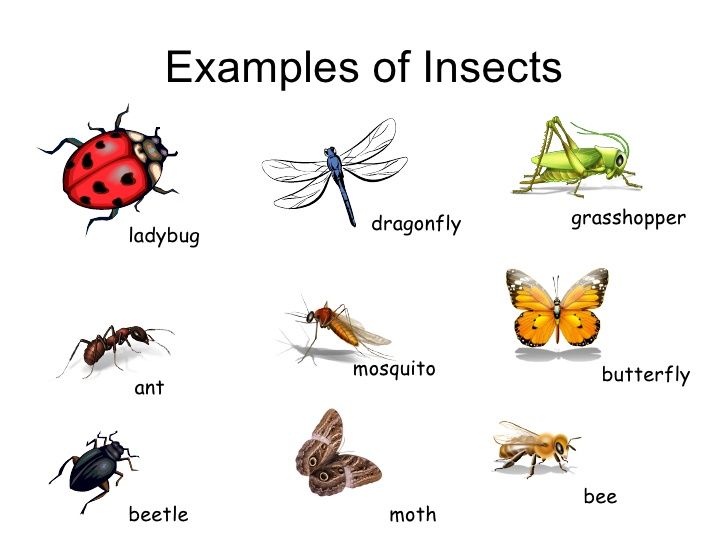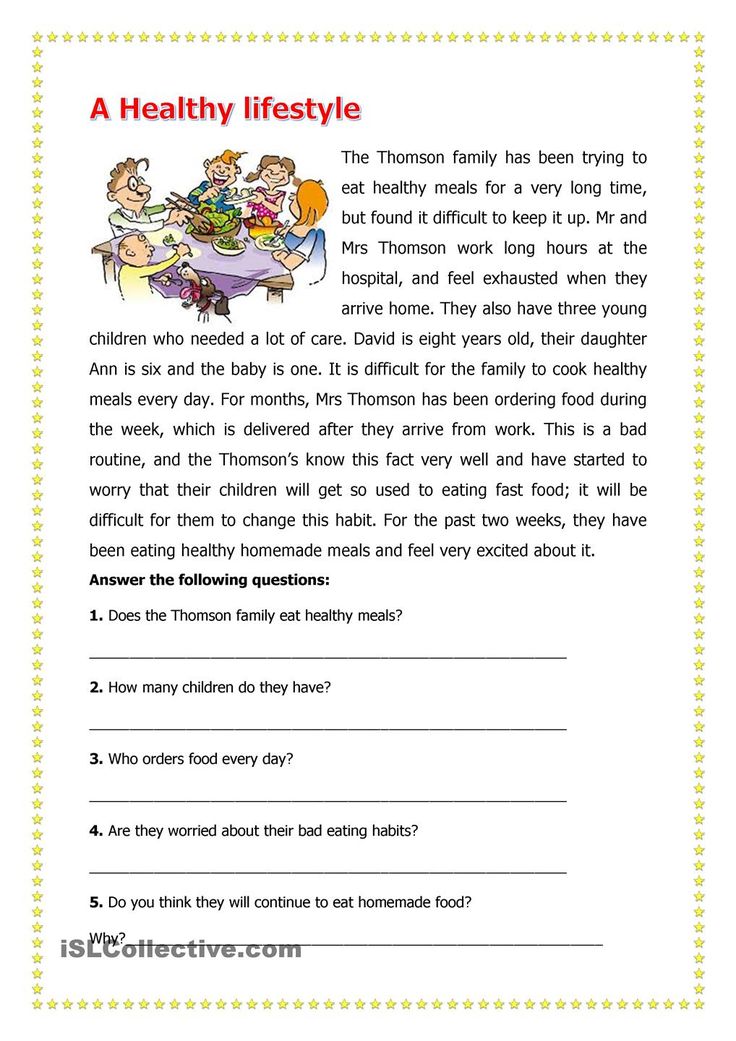Show me bugs
Numbers of Insects (Species and Individuals)
It has long been recognized and documented that insects are the most diverse group of organisms, meaning that the numbers of species of insects are more than any other group. In the world, some 900 thousand different kinds of living insects are known. This representation approximates 80 percent of the world's species. The true figure of living species of insects can only be estimated from present and past studies. Most authorities agree that there are more insect species that have not been described (named by science) than there are insect species that have been previously named. Conservative estimates suggest that this figure is 2 million, but estimates extend to 30 million. In the last decade, much attention has been given to the entomofauna that exists in the canopies of tropical forests of the world. From studies conducted by Terry Erwin of the Smithsonian Institution's Department of Entomology in Latin American forest canopies, the number of living species of insects has been estimated to be 30 million.
Insects also probably have the largest biomass of the terrestrial animals. At any time, it is estimated that there are some 10 quintillion (10,000,000,000,000,000,000) individual insects alive.
In the United States, the number of described species is approximately 91,000. The undescribed species of insects in the United States, however, is estimated at some 73,000. The largest numbers of described species in the U.S. fall into four insect Orders: Coleoptera (beetles) at 23,700, Diptera (flies) at 19,600, Hymenoptera (ants, bees, wasps) at 17,500, and Lepidoptera (moths and butterflies) at 11,500.
Several enlightening studies have been conducted involving the numbers of individual insects in a given area. In North Carolina, soil samples to a depth of 5 inches yielded a calculation that there were approximately 124 million animals per acre, of which 90 million were mites, 28 million were springtails, and 4.5 million were other insects. A similar study in Pennsylvania yielded figures of 425 million animals per acre, with 209 million mites, 119 million springtails, and 11 million other arthropods. Even specific insect species have been found to be quite numerous, with calculations of from 3 to 25 million per acre for wireworms (larvae of click beetles).
Even specific insect species have been found to be quite numerous, with calculations of from 3 to 25 million per acre for wireworms (larvae of click beetles).
Certain social insects have large numbers in their nests. An ant nest in Jamaica was calculated to include 630,000 individuals. A South American termite nest was found to have 3 million individuals. Locust swarms are said to hold up to one billion individuals.
These great numbers of insect species and individuals were created by a number of factors including their long geological history, the capability of flight, their small size that allows survival in many various habitats, their ability to store sperm for delayed fertilization, and their general adaptive abilities to the environment. Insects have remarkable fertility and reproductive abilities, which have usually led to the vast numbers of individuals in nature. East African termite queens have been recorded to lay an egg every two seconds, amounting to 43,000 eggs each day. To appreciate the population potentials of insects the example of the housefly is sometimes used, stating that the descendants of one pair of this insect, provided that they all survived during a five month season, would total 190 quintillion individuals.
To appreciate the population potentials of insects the example of the housefly is sometimes used, stating that the descendants of one pair of this insect, provided that they all survived during a five month season, would total 190 quintillion individuals.
Recent figures indicate that there are more than 200 million insects for each human on the planet! A recent article in The New York Times claimed that the world holds 300 pounds of insects for every pound of humans.
Selected References:
Erwin, T. L. 1983. Tropical forest canopies: the last biotic frontier. Bulletin of the Entomological Society of America, Volume 29: 14-19.
Janzen, D. 1976. Why are there so many species of insects? Proceedings of XV International Congress of Entomology, 1976: 8494.
May, R. M. 1988. How many species are there on earth? Science, Volume 241: 441-1449.
Pearse, A. S. 1946. Observations on the Microfauna of the Duke Forest. Ecological monographs, Volume 16: 127-150.
Sabrosky, C. W. 1952. How many insects are there? in Insects: The Yearbook of Agriculture. U.S. Dept. of Agr., Washington, D. C.
Prepared by the Department of Systematic Biology, Entomology Section,
National Museum of Natural History, in cooperation with Public Inquiry Services,
Smithsonian Institution
Information Sheet Number 18, 1996
15 Common House Bugs to Know
Advertisement - Continue Reading Below
1
Lady Bird Beetle (a.k.a. Ladybugs)
What it looks like: You’re probably very familiar with this one. Ladybugs are tiny, oval, winged beetles that are usually between 1 to 10 millimeters (mm) in length, depending on the species. They are typically bright red with black spots.
Where you’ll find it: You can find them in your home in autumn between September through November, when the temperatures drop and they seek a warm spot for winter. They like to gather together within crevices, like cracks around windows and door frames, soffits, attics, wall voids, and the area behind fascia boards and exterior siding.
They like to gather together within crevices, like cracks around windows and door frames, soffits, attics, wall voids, and the area behind fascia boards and exterior siding.
Can it harm you? These beetles are believed to trigger allergies, ranging from eye irritation to asthma, potentially because they emit a stinky, yellow secretion when they feel they’re in danger. Lady bird beetles also can bite (it feels like a pinch), but they are not poisonous and are rarely harmful.
Annette Perrio / EyeEm//Getty Images2
Brown Marmorated Stink Bug
What it looks like: This invasive bug is large, as it can grow up to 2 centimeters long. “When you look at its abdomen from the top, just around where its wings are, you’ll see a marbled pattern on its back,” which is shield-shaped, says Michael J. Raupp, Ph.D., professor of entomology at The University of Maryland and creator of Bug of the Week. A brown marmorated stink bug also has distinct white bands on its antennae and legs, which distinguishes it from other native species that are also brown in color.
Where you’ll find it: You’ll spot these in your home from September through October to find a protective spot as its gets colder. They’ll enter homes via windows, door cracks, vents, siding, shutters, loose siding—you name it. Unfortunately, they congregate in masses, so getting rid of stink bugs can be annoying.
Can it harm you? Besides the pungent odor they give off, stink bugs do not bite humans or pets, but they can do a number on your garden.
claudiodivizia//Getty Images3
Wolf Spider
What it looks like: Wolf spiders are hunting spiders—and can be pretty big, up to an inch and a half long, Marc Potzler, a board-certified entomologist and technical services manager with Ehrlich Pest Control recently told Prevention.com. They are usually black, gray, or brown, and have a hairy appearance.
Where you’ll find them: After mating in the fall, female wolf spiders look for protected areas to produce their egg cocoons. You’ll find them under and between boards, stones, firewood, and siding, most commonly in basements, sheds, or garages where other insects are, says Potzler.
You’ll find them under and between boards, stones, firewood, and siding, most commonly in basements, sheds, or garages where other insects are, says Potzler.
Can it harm you? Wolf spiders can bite, but only if they feel threatened. “They would prefer to hide than bite,” according to Howard Russell, M.S., an entomologist at Michigan State University.
Tutye//Getty ImagesAdvertisement - Continue Reading Below
4
Cellar Spider (a.k.a. Daddy Long Legs)
What it looks like: These are spindly spiders with long thin legs. The body of the cellar spider is usually 1/4- 5/16-inch-long, with legs extending another 2 inches.
Where you’ll find it: “You’ll always find them in a corner with a cobweb,” says Raupp. Their namesake matches their stomping grounds, including basements, attics, or other protected places. Cellar spiders are known for their webbing, continuously adding to them.
Can it harm you? Cellar spiders are not venomous and not known to bite.
Paul Starosta//Getty Images5
Asian Camel Cricket
What it looks like: These crickets are light brown, tan, and dark brown with a humped back. They have very long antennae, and their bodies grow between 1/2 to 1 1/2 inches long.
Where you’ll find it: “You’ll find them in the basement or dark mancave,” says Raupp, as they prefer dark, moist places.
Can it harm you? No. Camel crickets do not bite and are not known to be harmful to humans and pets.
Michael J. Raupp/Bug of the Week6
Field Cricket
What it looks like: When you think of a stereotypical cricket, these are the ones. Adult field crickets are black and brown in color and are between 1/2 to 1 inch long. They have six legs, long antennae, and antennae-like appendages at the end of their abdomens called cerci. They also have hind wings.
They also have hind wings.
Where you’ll find it: They enter buildings through open doors and windows and through cracks in foundations. You’ll likely be able to locate them through their signature chirping.
Can it harm you? No. Field crickets do not bite or carry diseases. However, once indoors, crickets may damage clothing, drapes, or wall coverings—thanks to stains from feces or by their feeding.
H Robinson J//Getty ImagesAdvertisement - Continue Reading Below
7
Odorous House Ants
What they look like: These black ants are tiny. They grow between 1/16 to 1/8 inch long. When they’re crushed, they release a bad (somewhat sweet) odor, often described as rotten coconut or banana.
Where you’ll find them: Odorous house ants feed on pretty much anything, but are drawn to sweet things. So, you’ll often find them near water and food sources, like garbage cans and kitchen sinks or counters. They also nest indoors near sources of warmth, commonly in wall voids near pipes or heaters.
They also nest indoors near sources of warmth, commonly in wall voids near pipes or heaters.
Can they harm you? Nope, just keep an eye on your groceries.
Jorge Villalba//Getty Images8
Carpenter Ant
What it looks like: Carpenter ants are one of the largest ant species in North America. Wingless types grow between ¼ to ½ inch, while those with wings can grow up to 1 inch. They are shiny, usually black or dark brown, and known for their narrow waists. They also have mandibles (jaw-like appendages) used for chomping.
Where you’ll find it: They often damage homes and other wooden structures, so they can be found in moist or decayed wood caused by exposure to water leaks, condensation, or poor air circulation.
Can it harm you? Unfortunately, yes. Carpenter ants can bite, and they’ve been known to break skin when they do, which can be painful. While they don’t use venom, they do inject an irritant called formic acid into the area, which may cause an allergic reaction. The bites usually don’t require medical attention but should be cleaned well to avoid any issues.
The bites usually don’t require medical attention but should be cleaned well to avoid any issues.
9
Western Conifer Seed Bug
What it looks like: These bugs are shaped a bit like a stink bug and grow up to 3/4 inch long. They are a reddish-brown color, and usually have a bright yellow or orange underside with black patches.
Where you’ll find it: Western conifer seed bugs tend to congregate in the fall as they seek shelter for the winter. They can be found around baseboards, window and door moldings, openings for electrical outlets and fixtures, openings for heating or cooling vents, and other similar pathways.
Can it harm you? They do not bite or sting, but can gather in annoyingly large numbers within the home.
Ines Carrara//Getty ImagesAdvertisement - Continue Reading Below
10
Cluster Fly
What it looks like: While they look similar to your standard house fly, cluster flies are often larger, about ⅓ inch long. They are dull-gray and black and have golden-yellow hairs on their bodies, which give them a golden sheen and bristly texture.
They are dull-gray and black and have golden-yellow hairs on their bodies, which give them a golden sheen and bristly texture.
Where you’ll find it: Cluster flies head indoors to outlast the winter. You’ll likely find them in attics, under siding, and around windows and crevices on the outside of buildings. They also congregate between walls and work their way out through openings in window frames and electrical fixtures.
Can it harm you? Cluster flies aren’t venomous and do not bite, don’t lay eggs in food like house flies, and aren’t associated with transmitting diseases.
hekakoskinen//Getty Images11
Silverfish
What it looks like: This creepy crawler get its name from its silvery scales and three, tail-like appendages that protrude from its abdomen. Its antennae is as long as its body and can grow up to 12 mm in length.
Where you’ll find it: Silverfish are known to feed on foods high in starches and destroy books, papers, wallpaper, and more. They are found in high-humidity environments, but are able to survive a wide range of temperatures. They usually hang out indoors in concealed, temperature-controlled areas such as bathrooms, attics, and basements.
They are found in high-humidity environments, but are able to survive a wide range of temperatures. They usually hang out indoors in concealed, temperature-controlled areas such as bathrooms, attics, and basements.
Can it harm you? Silverfish do not bite, do not have venom, and are not poisonous if ingested. They are gross, though.
Leonid Eremeychuk//Getty Images12
Bed Bugs
What they look like: An adult bed bug can be anywhere from ⅛ - ¼-inch in size. “They are often compared to the size of an apple seed,” says Nancy Troyano, Ph.D., a board-certified entomologist with Western Exterminator. Bed bugs can range in color from a mahogany-red to light brown, “depending on when they last fed,” Troyano says.
Where you’ll find them: In general, you’ll find them around people. “Blood is their only food source,” says Glen Ramsey, a board-certified entomologist and senior technical services manager at Orkin. Bed bugs are normally nocturnal, and they’ll come out of hiding from places like a mattress to feed on sleeping or quietly resting people. “They can travel from place to place with ease, including items such as luggage, purses, and other personal belongings,” Ramsey says.
Bed bugs are normally nocturnal, and they’ll come out of hiding from places like a mattress to feed on sleeping or quietly resting people. “They can travel from place to place with ease, including items such as luggage, purses, and other personal belongings,” Ramsey says.
Can they harm you? Yes. “While bed bugs have not been found to transmit any diseases to humans, their bites may cause symptoms such as itching, red welts, or swelling the day after being bitten,” Ramsey says. However, “many bites can leave no mark and go completely unnoticed.”
dblight//Getty ImagesAdvertisement - Continue Reading Below
13
Cockroach
What it looks like: There are different types of cockroaches, but the most common are the American, German, oriental, and brown-banded cockroaches, Ramsey says. “Cockroaches can measure over two inches length, with tropical species tending to be larger than those found in other climates,” Ramsey says. They have six legs, two antennae, and some even have wings. “However, most winged cockroaches are not particularly adept at flying,” Ramsey says.
They have six legs, two antennae, and some even have wings. “However, most winged cockroaches are not particularly adept at flying,” Ramsey says.
Where you’ll find it: You can find cockroaches in a lot of places in your home, Troyano says. They could pop up in the bathroom—they love to snack on soap residue—dark places in your kitchen like cupboards and cabinets, laundry rooms, basements, and drains, she says.
Can it harm you? Unless you have a serious infestation, cockroaches won’t bite you. While cockroaches don’t give people diseases through bites, they can transmit foodborne illnesses from one place to another. They can also trigger asthma “because of a protein in their saliva, droppings, and on their body,” Troyano says.
Zania Studio//Getty Images14
Fruit Flies
What they look like: Fruit flies look like light brown flies, says Russell. They’re usually very small—about 1/8 of an inch. “There are two main types of fruit flies: the common red-eyed fruit fly and the dark-eyed fruit fly,” Ramsey says.
“There are two main types of fruit flies: the common red-eyed fruit fly and the dark-eyed fruit fly,” Ramsey says.
Where you’ll find them: Fruit flies like to hang out around fruit and produce, especially when it’s ripe, rotting, or decayed, and they’re also attracted to fermented items like beer, liquor, and wine, Ramsey says. “Fruit flies also may breed and develop in drains, garbage disposals, trash cans, and mop buckets,” he adds.
Can they harm you? In general, Russell says that fruit flies “are just a nuisance.” But they have the potential to contaminate your food with bacteria and other pathogens, Ramsey says, which is why it’s so important to store produce in air-tight containers or refrigerators and inspect any fruits or vegetables brought into your home. “Also, establish a schedule to regularly clean drain lines, garbage disposals, and any location where food waste accumulates,” he says.
Drbouz//Getty Images15
House Centipede
What it looks like: Centipedes have “long, segmented, generally flattened bodies with one pair of legs per body segment,” Russell says. They also have a pair of venomous fangs they use to take out their prey. Centipedes range from 4 to 152 millimeters in size and usually are brown or a reddish orange color.
They also have a pair of venomous fangs they use to take out their prey. Centipedes range from 4 to 152 millimeters in size and usually are brown or a reddish orange color.
Where you’ll find it: “House centipedes live in damp, undisturbed places, such as cellars, closets, bathrooms, and attics,” Troyano says.
Can it harm you? Some types of centipedes will bite “but do not pose a serious threat,” Troyano says. Still, a bite can still lead to some swelling and a little pain in the area.
Additional reporting by Korin Miller
Motionshooter//Getty ImagesEmily Shiffer
Emily Shiffer is a former digital web producer for Men’s Health and Prevention, and is currently a freelancer writer specializing in health, weight loss, and fitness. She is currently based in Pennsylvania and loves all things antiques, cilantro, and American history.
Mistake as a Necessity - Vedomosti
Recently on LinkedIn I came across an interesting discussion about what quality should be checked in an interview with a job applicant in the first place. Most forum participants named honesty, courage and leadership. I then thought: generalizations are inappropriate here - a lot depends on the level of the position, on the profile of the company. For example, one of the important qualities that people in our company pay attention to is the ability to learn quickly.
Most forum participants named honesty, courage and leadership. I then thought: generalizations are inappropriate here - a lot depends on the level of the position, on the profile of the company. For example, one of the important qualities that people in our company pay attention to is the ability to learn quickly.
Everyone has their own learning style. Someone likes to observe and collect information, someone likes theories, systems, logical constructions, and someone prefers to act and test ideas in practice. A Chinese proverb says: “Tell me and I will forget. Show me and I will remember. Let me do it and it will be mine forever.” At the moment, the most successful model of learning is recognized as “active learning by practice”. This concept was formulated by David Kolb, who argued that the starting point for effective learning is the acquisition of concrete practical experience. Experience provides material for observation, reflection and the construction of theoretical concepts, and then comes the stage of active experimentation and further improvement.
But practical experience is impossible without mistakes. Error is a natural phenomenon in an imperfect and not fully understood world. In scientific knowledge, error plays an important role, because it narrows the circle of search and brings us closer to solving the problem. Rabindranath Tagore said: "Close the door to errors, and the truth will not be able to enter." I remember how we once discussed the requirements for a young consultant - there was a phrase: "Can prepare a draft report for a manager without significant errors." Our senior partner said, “I don't like that phrase. If employees are afraid to make a mistake, they will stupidly copy the old experience and will not be able to offer anything interesting and original. Avoidance motivation does not stimulate creativity. Managers must learn to be tolerant of the mistakes of their subordinates. And if they do not have enough tolerance, then people will either stop in their development, or they will deny and hide their mistakes, which will lead to big problems. ”
”
In real life, everyone tries to avoid mistakes, build control processes, and still make mistakes sooner or later. The experience of making a mistake can be very painful. What is the algorithm of actions if an error still occurs? I would suggest five steps.
The first step is to acknowledge the mistake and report it. Do not close your eyes and hope that maybe it will blow over. Do not blame the mistake on someone else or blame circumstances. Do not persist in denying an obvious mistake. Intentional concealment of an error can be classified as deception. You will show yourself as an honest, courageous and responsible person if you admit your wrong and tell about the mistake, and the sooner the better. Some errors can be caught on the fly. Maybe the report hasn't been sent yet, maybe the client hasn't opened the file yet, maybe the calculations based on erroneous data have not yet been made and passed on to senior management. Do not hesitate a second, act, report a bug. If you don’t know how to say and to whom to tell, consult with an experienced person whom you trust, but do not be silent!
The second step is to apologize. It is desirable to apologize personally, and - sincerely. Don't justify yourself. Making excuses means that you are not ready to accept and bear responsibility. Long excuses can only fuel conflict. Briefly describe the situation and say that you are very sorry and you are aware of your guilt, tell about the plan for further action. Be prepared for the fact that someone will be frankly dissatisfied and may take out their anger on you, someone may not care, but someone will understand you and accept your apology.
It is desirable to apologize personally, and - sincerely. Don't justify yourself. Making excuses means that you are not ready to accept and bear responsibility. Long excuses can only fuel conflict. Briefly describe the situation and say that you are very sorry and you are aware of your guilt, tell about the plan for further action. Be prepared for the fact that someone will be frankly dissatisfied and may take out their anger on you, someone may not care, but someone will understand you and accept your apology.
The third step is to restore faith in yourself. Remember that a mistake is just a mistake. This is serious, but not fatal. Forgive yourself. Straighten your back. Call to memory all your previous achievements and successes. Tell yourself that you are a smart and good person. Remember all those who love you and turn to them for support. You have to believe that everything can be fixed. There is always a second chance.
The fourth step is to throw all your strength into correcting the mistake. This is the most important step. Recognition of a mistake is a victory over oneself, and one must also achieve victory over a mistake. Don't look back, don't torture yourself with thoughts like "I wish I were then"... You only need to look forward. Concentrate and show yourself to the fullest. In critical situations, forces wake up in a person that he does not suspect in ordinary life. Do not distance yourself from the project in which you screwed up, on the contrary - be sure to participate in it. Perhaps your finest hour has come. Perhaps the second option will be ten times better than the first. Perhaps, without making a mistake, you would never have gone so deep into the topic. Now you know what to check, what to pay attention to, what to do, what not to do. People remember the latest events, let everyone remember not that you made a mistake, but how you dealt with the problem.
This is the most important step. Recognition of a mistake is a victory over oneself, and one must also achieve victory over a mistake. Don't look back, don't torture yourself with thoughts like "I wish I were then"... You only need to look forward. Concentrate and show yourself to the fullest. In critical situations, forces wake up in a person that he does not suspect in ordinary life. Do not distance yourself from the project in which you screwed up, on the contrary - be sure to participate in it. Perhaps your finest hour has come. Perhaps the second option will be ten times better than the first. Perhaps, without making a mistake, you would never have gone so deep into the topic. Now you know what to check, what to pay attention to, what to do, what not to do. People remember the latest events, let everyone remember not that you made a mistake, but how you dealt with the problem.
The fifth step is to draw conclusions and share experiences. Remember: sometimes our mistakes solve more problems for us than they create. If you have managed to overcome yourself, learn new things and teach others from your experience, then you will have something to say in an interview and make a great impression. Have you had an experience when you made a mistake? What have you done? What lessons have been learned and what have they learned?
If you have managed to overcome yourself, learn new things and teach others from your experience, then you will have something to say in an interview and make a great impression. Have you had an experience when you made a mistake? What have you done? What lessons have been learned and what have they learned?
Media news2
Is advertising distracting? Subscribe to hide itLG Question Library | LG Kazakhstan
Skip to Contents Skip to Accessibility Help
- Homepage
- SUPPORT
- Manuals and downloads
- Advice library
Find useful information about your LG product
Enter a keyword or select a product category, then select a topic.
Articles Select product
There is no relevant content.
Recently searched
No history of recent searches
Recommended for viewing
- user manual
- update to
- Smartshare
- repair
- service
CategoryTV/AUDIO/VIDEO HOUSEHOLD APPLIANCESIT ProductsAIR CONDITIONERSMOBILE DEVICES
Select product
Topic
Subtopic
Select a product below.
CategoryTV/AUDIO/VIDEO HOUSEHOLD APPLIANCESIT ProductsAIR CONDITIONERSMOBILE DEVICES
Select product
Select product category
1172 Corresponding results for Clear search terms clear search box
Featured Articles
Troubleshooting Refrigerators
LG Pick Freezer not freezing enough
Is the food melting in the freezer? Ice cream is too much
Operation Washing Machines
[ThinQ] (iOS) When registering my product, the ThinQ app says that the Wi-Fi password for the LG Smart network ~~~ is incorrect.












